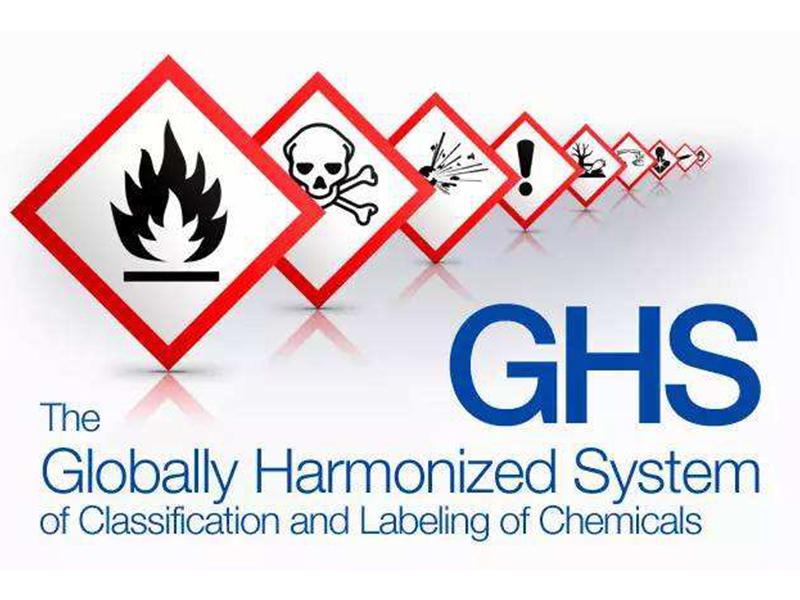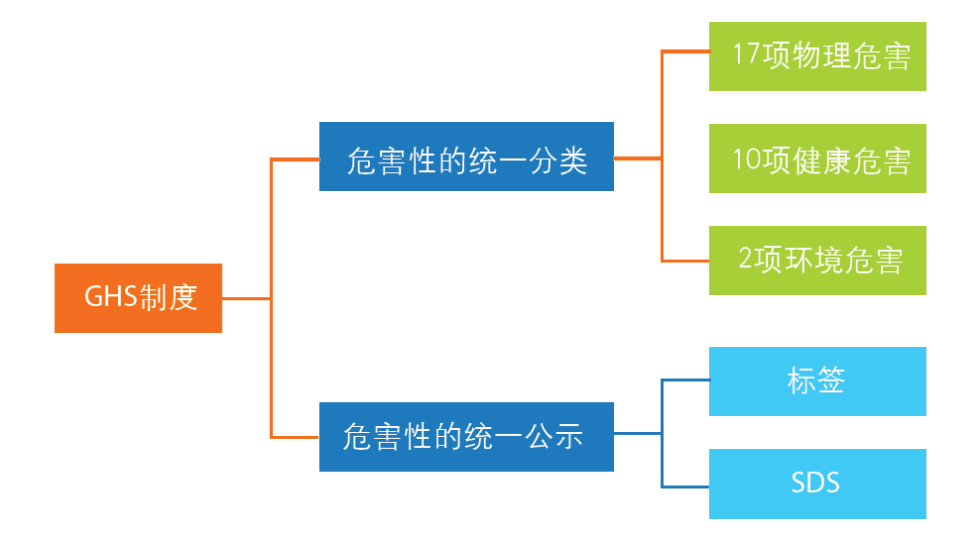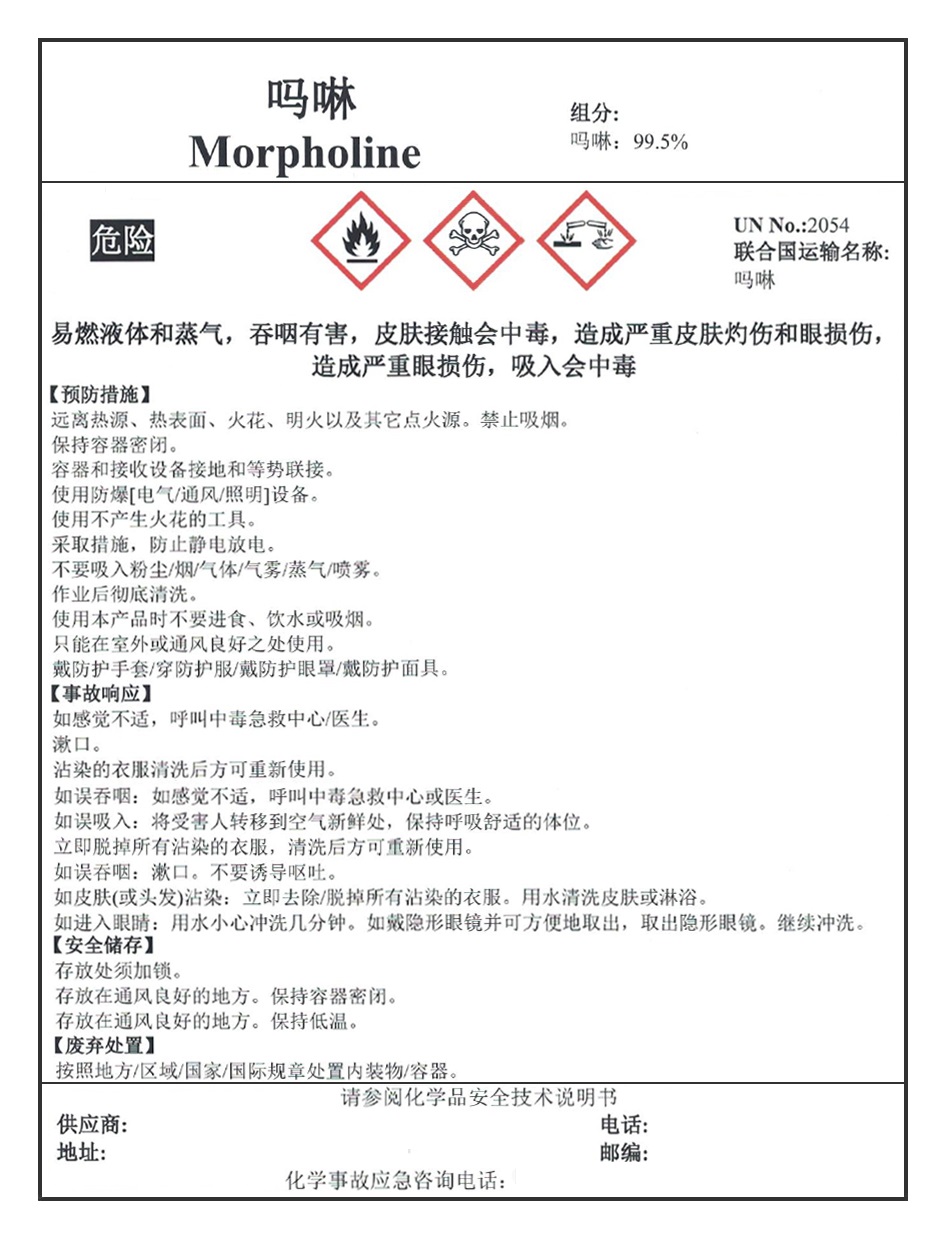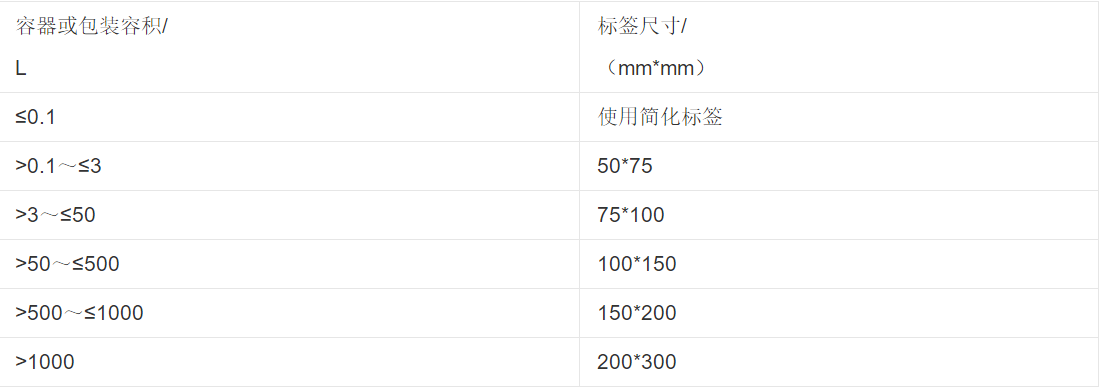

GHS is the abbreviation of "Globally Harmonized Classification and Labeling of Chemicals". The main content of GHS is the global unified classification standard for chemicals, safety labels and safety technical data sheets (MSDS / SDS).

China GHS is a regulatory system consisting of the “Regulations on the Safety Management of Hazardous Chemicals”, the “Administrative Measures for the Registration of Hazardous Chemicals”, how to classify national standards, how to make SDS and labeling national standards, etc. It is the highest law governing China's GHS.
Our company has 12 years of experience in the operation of importing dangerous goods, is familiar with the United Nations and various countries regarding GHS regulations and systems, is proficient in the review and rectification system and process of GHS labeling of dangerous goods imports, and cooperates with Yangshan Luchao Port dangerous warehouse, Shanghai Entry-Exit Inspection and Quarantine Bureau of Industrial Products and Raw Materials Testing Technology Center and Hangzhou Xike Testing Technology Co., Ltd. have long-term good business cooperation. According to the MSDS, cargo marks and labels provided by the importer, compliance audits can be conducted in advance, and the GHS label identification report for expedited problematic agencies can be expedited, and GHS labels and UN packaging can be rectified in Yangshan dangerous warehouse.
In the following, our company will introduce and explain the GHS Chinese public label in detail.

1.Label element
Includes chemical identification, pictograms, signal words, hazard statements, precautionary statements, emergency telephone numbers, supplier identification, and information referrals.
2.Label content
2.1 Chemical identification
Indicate the chemical name or common name of the chemical in Chinese and English, respectively. The name needs to be conspicuous and clear, above the label. The name should be the same as the name in the chemical safety data sheet.
The mixture shall be marked with the chemical or common name, concentration, or concentration range of the major components that contribute to its hazard classification. When more components need to be marked, the number of components should not exceed five. Components that are classified as trade secrets may not be marked, but their dangers should be listed.
2.2 Pictograms
The pictogram specified in GB 30000.X-2013 is used.
2.3 Signal words
According to the danger degree and category of the chemical, use the words "dangerous" and "warning" to warn of the degree of danger. The signal word is below the name of the chemical and requires eye-catching and clear. According to GB 30000.X-2013, select the signal words for different categories of hazardous chemicals.
2.4 Hazard statement
A brief overview of the hazardous properties of chemicals. Just below the signal word. According to GB 30000.X-2013, select the hazard description of different categories of hazardous chemicals.
2.5 Precautionary statements
It states the matters that must be paid attention to during the handling, transportation, storage and use of chemicals, and simple and effective rescue measures in the event of an accident. The requirements are concise and focused. This part should include safety precautions, handling of accidents (such as leaks, personal contact or fire, etc.), safe storage measures, and disposal.
2.6 Supplier Identification
Supplier name, address, zip code, and phone.
2.7 Emergency consultation phone
Fill in the 24h chemical accident emergency consultation phone entrusted by the chemical manufacturer or manufacturer.
There should be at least one 24-hour chemical accident emergency consultation telephone in China on the safety label of imported chemicals.
2.8 Information
Chemical users are advised to refer to the chemical safety data sheet.
2.9 Sequencing of Hazard Information
When a chemical has two or more hazards, the order of pictograms, signal words, and hazard statements for safety labels is as follows:
2.9.1 Pictogram sequence
The sequence of the physical hazard pictograms is determined according to the primary and secondary hazards in GB 12268. For chemicals not listed in GB 12268, the hazards in the following hazard categories are always primary hazards: explosives, flammable gases, flammable sols , Oxidizing gas, high-pressure gas, self-reactive substances and mixtures, pyrophoric substances, organic peroxides. The determination of other major hazards is determined in accordance with the method of determining the hazards of the United Nations "Model Regulations on Recommendations on the Transport of Dangerous Goods".
For health hazards, follow this order: if a skull and crossbones graphic symbol is used, the exclamation graphic symbol should not appear; if a corrosive graphic symbol is used, the exclamation mark should not appear to indicate skin sensitisation or skin / eye irritation .
2.9.2 Signal Word Order
When there are multiple hazards, if the signal word "Danger" is selected on the safety label, the signal word "Warning" should not appear.
2.9.3 Order of danger description
All hazard statements should appear on the safety label, arranged in order of physical hazard, health hazard, and environmental hazard.
3. Simplified labels
For small packagings of chemicals less than or equal to 100ml, the safety label elements can be simplified to facilitate labeling, including chemical identification, pictograms, signal words, hazard statements, emergency telephone numbers, supplier names, contact numbers, and information. Prompt words are sufficient.
4.Label making
4.1 Writing
The text of the label should be simple, clear, easy to understand, and standardized Chinese expressions. It can also be used in minority languages or foreign languages, but the meaning must correspond to Chinese characters, and the glyphs should be smaller than Chinese characters. Use the same text or graphic representation for the same meaning
When new information is found for a chemical, the label should be revised in a timely manner.
4.2 Color
The color of the pictograms in the label is implemented in accordance with the provisions of GB 30000.X-2013. Generally, black graphic symbols are used with a white background, and the square frame is red. The text should use a color that has a clear contrast with the background color, and generally uses black and white. For domestic use, the box border can be black.
4.3 Label size
For containers or packages of different capacities, the minimum label size is shown in Table 1.

4.4 Printing
4.4.1 A black border should be added to the edge of the label, and a margin greater than or equal to 3mm should be left outside the border, and the border width should be greater than or equal to 1mm.
4.4.2 The pictograms must be visible from a long distance, and also under smoky conditions or when the container is partially blurred.
4.4.3 The printing of labels shall be clear, and the printing materials and adhesive materials used shall be durable and waterproof.
5. Use of labels
5.1 How to use
5.1.1 The safety label shall be affixed, hung or spray printed on the obvious position of the chemical packaging or container.
5.1.2 When used in combination with a transportation mark, the transportation mark can be placed on the other side of the security label to separate it from other information, or it can be placed on the packaging near the security label. In the latter case, The pictograms in the label are duplicated with the transport signs, and the pictograms in the safety label pool should be deleted.
5.1.3 For combined containers, it is required to affix (hang) safety labels on the inner packaging and transport pictograms on the outer packaging. If the transport signs are not required, safety labels can be affixed.
5.2 Location
The location of the security label to be pasted and printed is specified as follows:
a) Barrel and bottle packaging: located on the side of the barrel and bottle;
b) Box-shaped packaging: located at the obvious end or side of the packaging;
c) Bags and bales: located in obvious places of packaging.
5.3 Notes on use
5.3.1 The sticker, hanging bolt or spray printing of the safety label should be firm to ensure that it will not fall off or be damaged during transportation and storage.
5.3.2 The safety label shall be affixed, bolted or spray-printed by the manufacturer before the goods leave the factory. If you want to change the packaging, change the packaging unit to re-attach, hang, or print the label.
5.3.3 Containers or packagings containing dangerous chemicals may only be removed from safety labels after treatment and confirmation that their hazards have been completely eliminated, otherwise the corresponding labels cannot be removed.
2021-03-29Which is a better shipping agent for ammonium fluoride dangerous goods
2021-03-27Analysis of lead dioxide marine export process by Shanghai dangerous goods freight forwarder
2021-03-25Dangerous goods forwarder explains the precautions for sulfur dioxide maritime export
2021-03-21Which is better for Shanghai curing agent marine export freight forwarder
2021-03-19Shanghai dangerous goods forwarder analysis barium chloride sea export operation steps